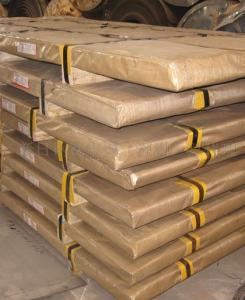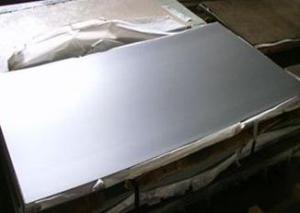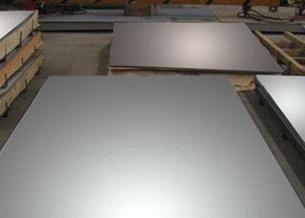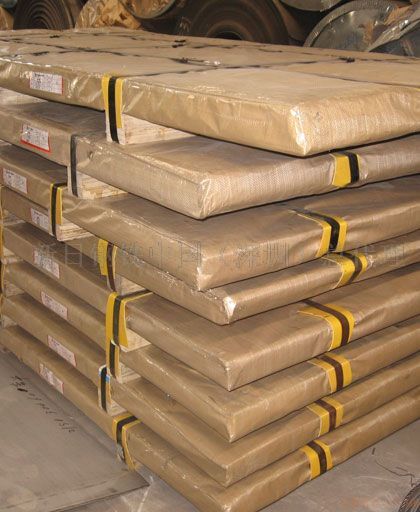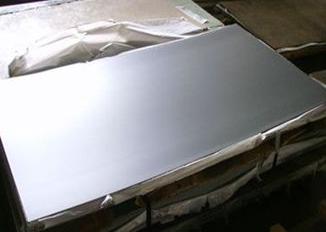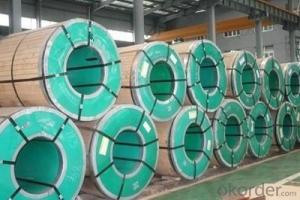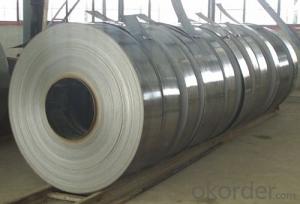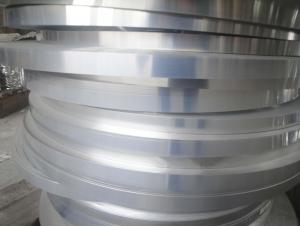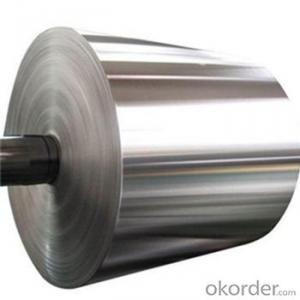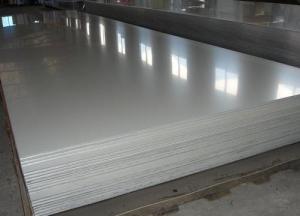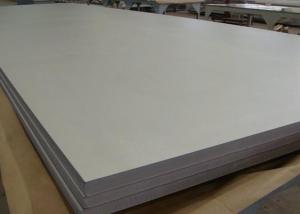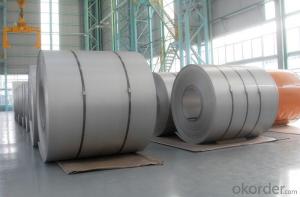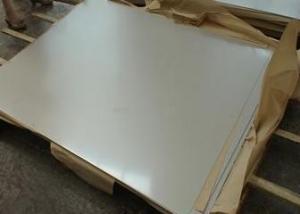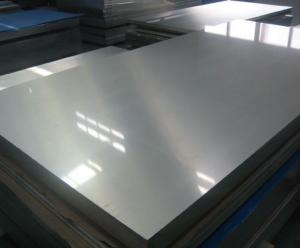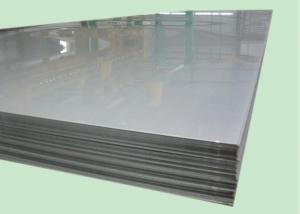Stainless Steel Sheet
- Loading Port:
- China Main Port
- Payment Terms:
- TT or L/C
- Min Order Qty:
- 1 Ton m.t.
- Supply Capability:
- 4000MT Per Month m.t./month
OKorder Service Pledge
Quality Product, Order Online Tracking, Timely Delivery
OKorder Financial Service
Credit Rating, Credit Services, Credit Purchasing
You Might Also Like
- Q: What are the different types of edges available for stainless steel strips?
- The desired appearance and specific application determine the available types of edges for stainless steel strips. Examples of common edge types include: 1. Mill Edge: This straight and smooth finish is the standard produced during manufacturing, with no further processing or treatment. 2. Slit Edge: Achieved by cutting the strip to the desired width using a slitting machine, this edge may have a slight burr or roughness that can be eliminated through deburring or other finishing methods. 3. Rounded Edge: Also called a round or rolled edge, it involves rolling the strip to create a curved or rounded profile. This type of edge provides a safer and more comfortable surface, suitable for applications where sharp edges may be hazardous. 4. Deburred Edge: By removing burrs or roughness from the strip's edge, a smooth and clean finish is achieved. Deburring is typically done using specialized equipment or processes. 5. Beveled Edge: This edge is created by cutting the strip at an angle, usually 45 degrees, resulting in a sloping or chamfered edge. Beveled edges are often used for aesthetic purposes or to facilitate welding or joining of the strips. 6. Custom Edges: Custom edges can also be created to meet specific functional or aesthetic requirements of a project or application. These may include different profiles, finishes, or treatments. When selecting the appropriate edge type, it is crucial to consider the intended use and requirements of the stainless steel strips. The edge choice can impact the final product's performance, appearance, and safety.
- Q: Are stainless steel strips suitable for elevator cabins?
- Yes, stainless steel strips are suitable for elevator cabins. Stainless steel is known for its durability, corrosion resistance, and aesthetic appeal, making it an ideal material for elevator cabins. It can withstand heavy usage, is easy to clean and maintain, and provides a sleek and modern look to the cabin interior.
- Q: Can stainless steel strips be used in the production of kitchen sinks?
- Yes, stainless steel strips can be used in the production of kitchen sinks. Stainless steel is a popular choice for kitchen sinks due to its durability, corrosion resistance, and aesthetic appeal. Stainless steel strips are commonly used in sink manufacturing to form the shape and structure of the sink, providing strength and longevity to the product.
- Q: Are stainless steel strips suitable for HVAC applications?
- Yes, stainless steel strips are suitable for HVAC (heating, ventilation, and air conditioning) applications. Stainless steel is a highly versatile and durable material that offers excellent resistance to corrosion, heat, and pressure. These characteristics make it ideal for use in HVAC systems, which often operate in demanding environments. Stainless steel strips are commonly used in HVAC applications for various purposes. They are frequently used for manufacturing air ducts, which are essential components in HVAC systems for distributing heated or cooled air throughout a building. Stainless steel strips provide the necessary strength, rigidity, and resistance to withstand the pressure and temperature fluctuations that occur in ductwork. Additionally, stainless steel strips are also used in HVAC systems for producing heat exchangers, which are crucial for transferring thermal energy between fluids. The corrosion resistance of stainless steel ensures that the heat exchangers can withstand the exposure to different liquids and gases without deteriorating over time. Furthermore, stainless steel strips are preferred in HVAC applications due to their hygienic properties. They are easy to clean, maintain, and do not support the growth of bacteria or mold, making them ideal for use in environments where air quality is critical, such as hospitals and laboratories. In conclusion, stainless steel strips are well-suited for HVAC applications. Their excellent corrosion resistance, durability, and hygienic properties make them a reliable choice for manufacturing air ducts, heat exchangers, and other components used in HVAC systems.
- Q: Are 111 stainless steel strips suitable for high-pressure applications?
- No, 111 stainless steel strips are not suitable for high-pressure applications. These strips are typically made of low-carbon stainless steel, which lacks the necessary strength and resistance to handle high-pressure environments. For high-pressure applications, it is recommended to use stainless steel strips with higher grades such as 300 series (e.g., 304 or 316) or duplex stainless steels, which have superior mechanical properties and corrosion resistance.
- Q: What are the different types of finishes available for stainless steel strips?
- There are several types of finishes available for stainless steel strips, each offering unique characteristics and aesthetic appeal. Some of the most common finishes include: 1. No.1 Finish: This is the most basic and rough finish, also known as hot-rolled annealed and pickled (HRAP). It has a matte appearance with visible grain lines and is commonly used for industrial applications. 2. No.2B Finish: This finish is achieved by cold rolling the stainless steel strip after pickling and annealing. It has a smooth, reflective surface with a moderately shiny appearance. No.2B finish is widely used in architectural, kitchen, and equipment applications. 3. No.2D Finish: This finish is similar to No.2B, but it is achieved by cold rolling the strip further to achieve a smoother finish. It has a slightly duller appearance than No.2B and is commonly used for deep-drawn applications. 4. No.3 Finish: Also known as a ground finish, this finish is achieved by polishing the stainless steel strip using abrasives. It has a semi-reflective appearance with a uniform grain pattern and is often used for architectural and decorative applications. 5. No.4 Finish: This is a popular finish for stainless steel strips as it combines a polished appearance with excellent corrosion resistance. It is achieved by further polishing the strip after No.3 finish, resulting in a smooth, brushed appearance. 6. No.6 Finish: This finish is achieved by polishing the stainless steel strip using finer abrasives, resulting in a higher level of reflectivity and a mirror-like appearance. It is commonly used for decorative and architectural applications. 7. No.7 Finish: This finish is similar to No.6 but with an even higher level of reflectivity. It is achieved by using even finer abrasives during the polishing process. No.7 finish is often used for decorative purposes or in high-end architectural projects. 8. No.8 Finish: Also known as a mirror finish, this is the highest level of reflectivity available for stainless steel strips. It is achieved by using extremely fine abrasives during the polishing process. No.8 finish is commonly used for decorative applications, such as in furniture and automotive trim. These are just a few of the many finishes available for stainless steel strips. The choice of finish depends on the desired appearance, functionality, and application requirements.
- Q: Are stainless steel strips suitable for water treatment plants?
- Yes, stainless steel strips are suitable for water treatment plants. Stainless steel is a corrosion-resistant material that can withstand exposure to water and various chemicals commonly used in water treatment processes. It offers excellent durability and longevity, making it a reliable choice for infrastructure in water treatment plants. Stainless steel strips can be used in various applications within these plants, such as piping, tanks, valves, and other equipment. Additionally, stainless steel is hygienic and easy to clean, which is essential in maintaining water quality. Overall, stainless steel strips are a suitable and beneficial material for use in water treatment plants.
- Q: Can stainless steel strips be hardened?
- Stainless steel strips have the ability to be hardened. This type of steel alloy, known as stainless steel, contains chromium to improve its resistance to corrosion and staining. Beyond its well-known corrosion resistance and strength, stainless steel can also undergo a process called heat treatment to increase its hardness. Heat treatment consists of heating the stainless steel to a specific temperature and rapidly cooling it to modify its microstructure and enhance its hardness. Quenching, which entails immersing the steel in a liquid or gas medium like oil or water, is typically utilized to accomplish this rapid cooling. By carefully controlling the heat treatment process, stainless steel strips can be hardened to different levels of hardness, enabling them to meet the requirements of various applications that demand enhanced strength and durability.
- Q: Can stainless steel strips be used in textile machinery?
- Yes, stainless steel strips can be used in textile machinery. Stainless steel is a versatile material that offers excellent corrosion resistance, high strength, and durability. These properties make it suitable for various applications in the textile industry, including textile machinery. Stainless steel strips can be used in weaving machines, spinning machines, knitting machines, and other machinery components where strength and resistance to wear and tear are required. Additionally, stainless steel strips are easy to clean and maintain, making them ideal for use in textile machinery that comes into contact with fibers, dyes, and other chemicals.
- Q: Can stainless steel strips be used in architectural façade systems?
- Yes, stainless steel strips can be used in architectural façade systems. Stainless steel is a popular choice for architectural applications due to its durability, corrosion resistance, and aesthetic appeal. It can be used as cladding or decorative elements in façade systems, providing a sleek and modern appearance to buildings.
Our company can provide stainless steel horizontal shear, slitting, CNC plasma cutting, sanding, 8K, oil mill, anti-fingerprint, embossed, red flowers, spare parts and other supporting services, and provide customized integration services to meet all customer needs.we have more than 10 years history, and have long maintained good cooperative relations with well-known domestic partners.
1. Manufacturer Overview
| Location | Wuxi,China |
| Year Established | 2000 |
| Annual Output Value | Above US$16 Million |
| Main Markets | Chinese, Europe,South Africa |
| Company Certifications | ISO9001:2000; |
2. Manufacturer Certificates
| a) Certification Name | |
| Range | |
| Reference | |
| Validity Period |
3. Manufacturer Capability
| a) Trade Capacity | |
| Nearest Port | Shanghai |
| Export Percentage | 30% |
| No.of Employees in Trade Department | 50 People |
| Language Spoken: | English;Chinese |
| b) Factory Information | |
| Factory Size: | Above 80,000 square meters |
| No. of Production Lines | Above 7 |
| Contract Manufacturing | OEM Service Offered;Design Service Offered |
| Product Price Range | Average |
Send your message to us
Stainless Steel Sheet
- Loading Port:
- China Main Port
- Payment Terms:
- TT or L/C
- Min Order Qty:
- 1 Ton m.t.
- Supply Capability:
- 4000MT Per Month m.t./month
OKorder Service Pledge
Quality Product, Order Online Tracking, Timely Delivery
OKorder Financial Service
Credit Rating, Credit Services, Credit Purchasing
Similar products
Hot products
Hot Searches
Related keywords
